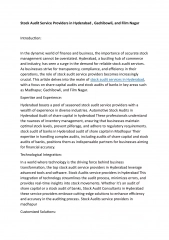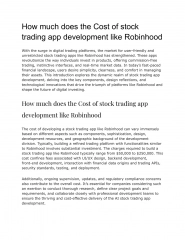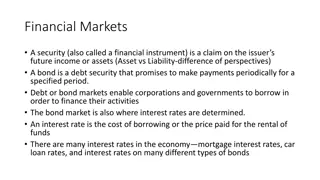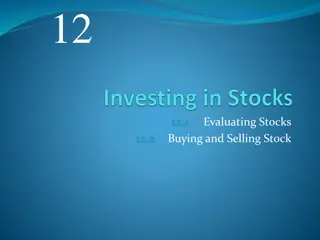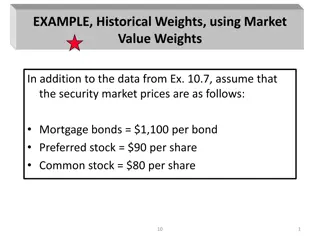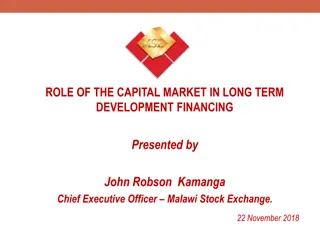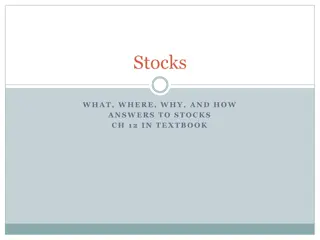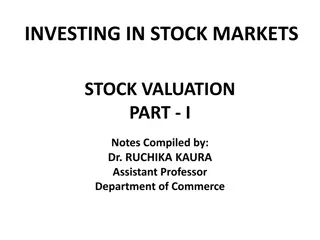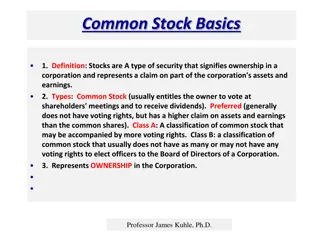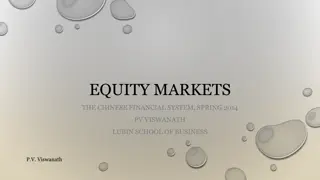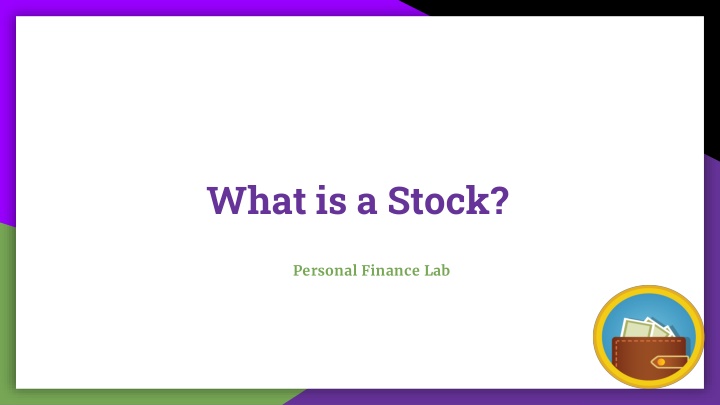
Stocks: Ownership, Types, and Origins
Learn about stocks, which represent ownership in a company, including common and preferred stock types. Discover how stocks differ from bonds, where stocks come from, and why companies may choose to split their stock.
Download Presentation

Please find below an Image/Link to download the presentation.
The content on the website is provided AS IS for your information and personal use only. It may not be sold, licensed, or shared on other websites without obtaining consent from the author. If you encounter any issues during the download, it is possible that the publisher has removed the file from their server.
You are allowed to download the files provided on this website for personal or commercial use, subject to the condition that they are used lawfully. All files are the property of their respective owners.
The content on the website is provided AS IS for your information and personal use only. It may not be sold, licensed, or shared on other websites without obtaining consent from the author.
E N D
Presentation Transcript
What is a Stock? Personal Finance Lab
Stock 101 What? A stock is part ownership of a company. When you own stock in a company, you actually own a percentage of the company itself (including its assets, like chairs, vehicles, and buildings) and a percentage of its profits. If a company issued 1,000 shares and you owned 100 shares, that does not mean that you can go to the company headquarters and take 1/10 of the furniture. It means that if the company was profitable and they made $100,000 and decided to pay it out to the shareholders, you would get 1/10 of $100,000 which is $10,000.
Types of Stocks Common Stock Common stock is the kind most investors buy. Common stock generally gives one vote at shareholder meetings for every share owned. With these stocks, you usually get a dividend, which is a payment that shareholders receive as the company succeeds. Preferred Stock Preferred stock generally does not have voting rights, and you generally will not find them trading on an exchange. However, preferred stock shares have the benefit of preference for dividend payments. Which means that if there is a dividend, the preferred stock holder my get a bigger share and get paid quicker.
Stock vs Bond When you buy a stock, you are buying a piece of ownership of a company. A bond, however, is more like a loan or debt; a bond is a promise that a company makes to pay you back the amount you lent them plus interest. Stock You own part of the company Bond Lend the company money
Where do Stocks Come From? New Issues (Initial Public Offering) A new issue of stock is when a private company decides to Go Public , and issues shares of stock for anyone to buy. Private companies Go Public and issue stock primarily to raise money: as they sell the shares in the company, the original owners allow the public to vote on some management decisions in exchange for the cash raised. Stock Dividend (Spilt) Companies can issue new stock by giving all current shareholders additional shares in proportion to how many shares they currently have. If the stock dividend is large enough (usually about 20%), it is instead called a Stock Split .
Why Would a Company Split? Attract Attention and Increase Trading Companies may split their stock to attract attention to their company. It also encourages people to buy and sell stocks since, when a company splits the shareholders get more shares. Lower the Price Some large companies like to have their stock price stay in a certain range. One reason for this is that the more expensive a stock, the fewer people who can afford to buy it (or buy an additional share), so splitting stocks can help it become more affordable
History of Stock Stocks trace their origins back to the Roman Empire, where large, private companies that carried out some public duties would sell shares of stock to Roman citizens for the same reasons companies do today; raise cash and grow their business. Over time more and more companies sold stocks to fund projects. For example many canal projects, railroads, and roads in Western Europe were built by Joint Stock Corporations. During the Age of Exploration, joint stock corporations were what funded explorers to voyage across oceans, and later ship goods across continents.

